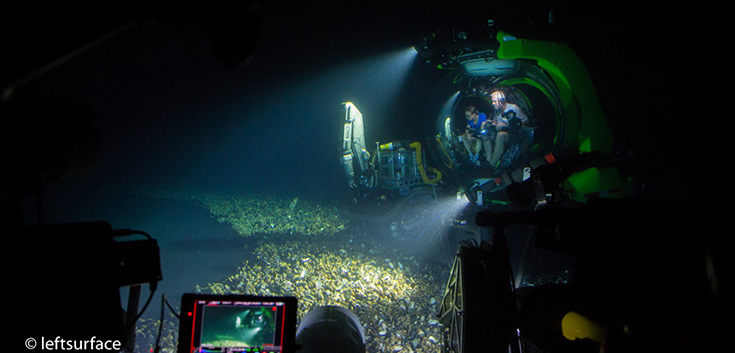Changes in the Gulf: Interview with Dr. Samantha Joye
Published by Ocean Conservancy
Dr. Samantha (Mandy) Joye is a Professor of Marine Sciences at the University of Georgia, where she studies how microbes in the Gulf break down oil. We last interviewed Dr. Joye in 2014, when she and a team of scientists were diving to the Gulf seafloor following the BP Deepwater Horizon oil disaster in the newly renovated deep-sea exploration vehicle, Alvin. She continues to study how oil and chemical dispersants affect microbial communities, as well as the natural oil and gas seeps in the Gulf seafloor. Recently, we had the pleasure of catching up with her again.
Ocean Conservancy: Since our last conversation, the $20 billion BP settlement was finalized, the damage assessment concluded that the BP oil disaster was “an injury to the entire ecosystem of the northern Gulf of Mexico,” and large-scale restoration has just begun. What has changed in your own work since then?
Dr. Samantha Joye: We’ve made some really good progress in understanding how oil and dispersants altered microbial communities. I think that is a really critical piece of the puzzle that was missing back in 2010 when the disaster began. Our 2015 paper showed the response of microbial communities to chemical dispersants with and without oil, and how the dispersants altered the structure and function of these communities but didn’t necessarily increase the rate at which oil was broken down. That work is something we’re hoping to continue, and is going to take years, and a lot more experiments.
OC: We read a recent article about a study underway at the revisited Ixtoc site, where an oil rig off the coast of Mexico spilled three million barrels into the Gulf in 1979. Early findings indicate that the communities of organisms living in the sediment may have started to return about seven years later. Since we’re now seven years out from the Deepwater Horizon disaster, are you seeing any signs of recovery in the sediments you study?
SJ: We’re going out in May to collect our seven-year time point. At six years, no, we were not seeing an uptick in recovery, in terms of microbial activity and degradation of the oil. After three to four years, small invertebrates were coming back, but not at the levels they were before the oil. Things in the sediments are not yet back to what I would consider normal.
OC: There are four federal agencies charged with spending $1 billion set aside from the BP settlement to restore the open ocean part of the Gulf. This could include projects to restore fish, corals, invertebrates, marine mammals and more. How do you think they should spend this money?
SJ: Restoring the open ocean is very difficult. It is much more difficult than restoring a salt marsh, which is difficult but where we can, for example, replant marsh grass. There are two things we have to do:
1) We must have baseline data. It has hamstrung the effort to identify and plan to restore what was damaged. We’ve got to develop an understanding of the dynamics of the biological system, top to bottom, and how it’s interconnected. Natural oil and gas seeps pull up nutrients from deep water up to the surface and fuel phytoplankton blooms. We had no idea these connections existed before a couple of years ago, and there are more connections we have yet to discover.
2) We know the Gulf isn’t the only place in the world that has seeps. But we don’t have a good feel for the capacity of the ecosystem to respond to oil and gas. We’ve got to answer the question of whether dispersants are effective. If an oil spill happened today, it’s the first thing we would do. And we’ve got to find out if that’s the right thing to do.
OC: Now it’s time for our rapid-fire questions. What is the coolest thing you’ve seen first-hand in the deep sea?
SJ: A giant red octopus that would not let go of the Alvin’s arm.
OC: What does it smell like in the Alvin?
SJ: Wet, damp clothes.
OC: Since you’ve been to the seafloor, would you ever consider going to space?
SJ: Every oceanographer has thoughts about being an astronaut. The reason I wanted to go is that I’ve seen the ocean from the bottom, so I wanted to see it from the top. It would be so cool to look down and see that beautiful 70 percent from space.
OC: Thank you, Dr. Joye, for all you do for our ocean. It’s always a pleasure to hear about your work, as your science adds an invaluable perspective to research and recovery in the Gulf.
How do you think the Gulf open ocean funding should be spent? Send a message to the Open Ocean Trustees today and ask them for comprehensive restoration of the Gulf beyond the shore.
Read the full article at: http://blog.oceanconservancy.org/2017/05/06/changes-in-the-gulf-interview-with-dr-samantha-joye/





